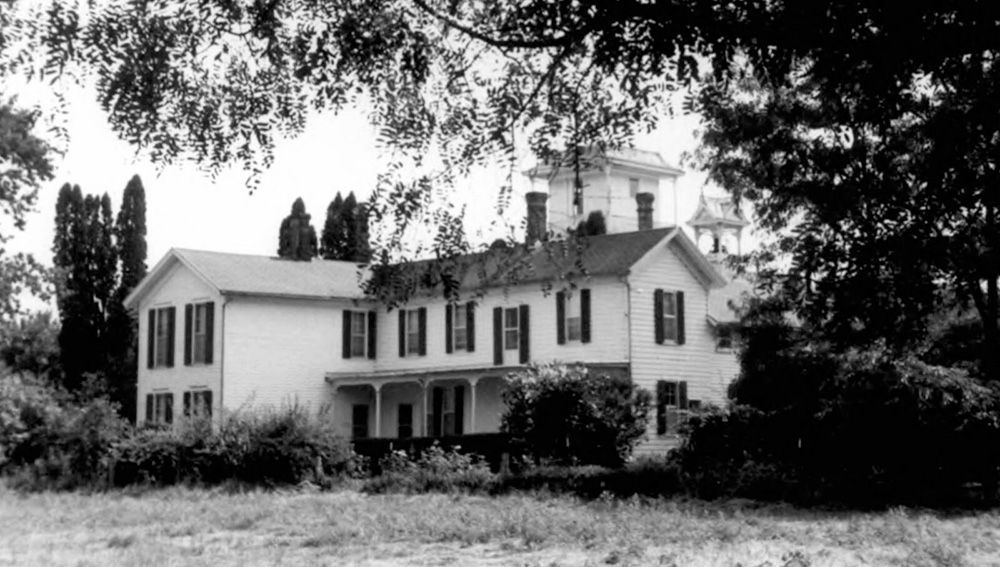Casper Zorn Farmhouse

The house on Champoeg Farm was built between 1867–70 by John Hoefer and Casper Zorn. It is a combination of southern and western design—a two-story frame building consisting of fourteen rooms. The structure has a brick pillar foundation, and the pillars are covered with zinc sheeting to protect the sills from moisture. The fir lumber used in the building was produced on the farm, and wrought-iron square nails were used in the construction. In the front part of the house, the lumber was planed, tongue and groove, by hand.
The building was enlarged in the 1880s to its present size. In 1896, a bell tower was added on the roof at the rear of the house. The bell was used to call the farmhands from the field at the noon hour. In the same year, the windmill tower was built.
The house was fully furnished with carpeting in large floral designs, heavy drapes, and period-appropriate furniture, along with many pioneer artifacts. It is located in the center of the Robert Newell Donation Land Claim, surrounded by approximately 950 acres of fertile farmland and timberland.
The name Champoeg Farm was officially registered on June 9, 1913, in the Marion County Clerk’s office in Salem, Oregon. The name was chosen to give the farm a clear identity. The largest Native American village in the Willamette Valley was once located in this area. French Prairie was known as Champoeg Country. Champoeg District, which extended from the Willamette River to the summit of the Rocky Mountains, was named by the Provisional Government. The first flour mill built in 1835, as well as all subsequent mills in the area, were known as the Champoeg mills. This location was also the site of the establishment of the first American government on the Pacific Coast. The original townsite of Champoeg was situated on the northwest section of the farm.
A number of individuals contributed to the development of the farm—either through ownership or participation—demonstrating courage, determination, and a lasting impact on the growth of the region. Notable figures include Robert Newell, Donald Manson, William Bailey, Thomas McKay, William Cannon, John Ball, William Johnson, George Laroque, John Hoefer, and Casper Zorn.
John Hoefer sailed from Europe to New Orleans, a voyage that took six weeks. He worked for two years as a cabinet maker before traveling by wagon train to California, and then by steamer to Oregon, arriving in the Champoeg district in 1852. Upon arrival, he continued his work as a cabinet maker and carpenter, building houses for settlers.
John Zorn, his two sons, and daughter emigrated from Europe to New York and later moved to Baraboo, Wisconsin. Seeking a new beginning in the Pacific Northwest, they traveled down the Mississippi River by boat to New Orleans, then by steamer to Panama, crossed the Isthmus, and continued by steamer to California before settling in the Champoeg district in 1854.
John Hoefer later married Anne, the daughter of John Zorn. Casper Zorn, the elder of the two sons, became Hoefer’s business partner. The younger son, Adam, helped with chores on the property until he was old enough to establish his own path.
Hoefer and Zorn operated the old tavern that once housed the Hudson’s Bay Company quarters and also ran a bowling alley at the Champoeg townsite. Their property was destroyed in the flood of 1861.
On February 3, 1862, Hoefer and Zorn purchased a flood-damaged flour and gristmill, repaired it, and operated it for fourteen and a half years. On February 24, 1866, they acquired 146 acres from Robert Newell, and the Champoeg Farm house was constructed on its current site.